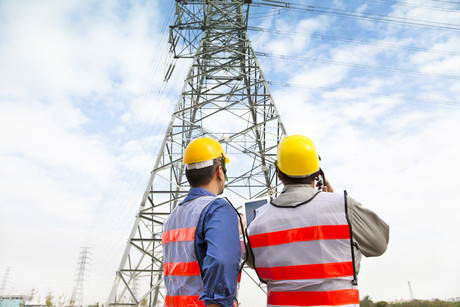
There are 21 workplace falls every day in Australia, according to new research.
The research and analysis by LINQ Height Safety Equipment shows that each fall results in an average of six weeks off work.
Falls are a common cause of death and injury in Australian workplaces. This is especially true in construction, where they account for half of total hospitalisations and are the most prevalent cause of death.
Ex-carpenter and height safety advocate David Crawford became a quadriplegic after a roof he was working on gave way in 1991. He has urged tradies not to leave their harnesses sitting in the back of their ute.
“Your harness is not going to help you unless you’re actually wearing it,” said Crawford, who works with Spinal Cord Injuries Australia’s (SCIA) Teamsafe program.
“I constantly see guys standing on roofs without harnesses. I see plumbers erecting cleaning gutters. I see tradesmen hanging over the edges. They have no fall protection, no harnesses, nothing.”
Crawford has also pleaded with workers to speak up about their safety concerns and for management to listen, citing this as critical to improving all aspects of safety on-site.
However, while wearing a harness will definitely improve the chances of survival in a fall, it must be appropriately designed and fitted.

Many workers who are wearing a harness are rescued unconscious after a fall, which is attributed to a violent collision between the fall arrest connection hardware and a worker’s head during the moment of impact.
“Many harnesses have a floating rear dee set-up — a piece of plastic holding the dee in place — so that in the moment of impact there is a significant risk that the dee will break through the plastic holder, resulting in the dee and associated hardware smashing the back of the worker’s head,” said the chief technical officer of LINQ, Stephen Sugden.
He also cited LINQ research which led to the design of harnesses with a ‘closed-loop system’, which means the dorsal dee will not move during the moment of impact.
Sugden stressed the importance of the harness fitting correctly and having a central front attachment point, as required in Australian Standard AS/NZS 1891.1, so as to limit vectorial (sideways) forces during the moment of impact.
“You can bruise a rib, crack a rib or even puncture a lung,” he said.
Even if a worker survives a fall uninjured, they are still in danger of suspension trauma. The tourniquet effect of ongoing suspension in a harness, combined with the effect of gravity on the body, limits blood flow to vital organs and can lead to ‘orthostatic intolerance’.
“Symptoms include increased heart rate, sweating, tingling in the arms, dizziness, pins and needles, nausea, heart palpations and confusion, followed by fainting and in some cases death.”
Sugden said the use of LINQ’s suspension trauma strap will enable the removal of all pressure on the femoral artery and has been proven to alleviate the dangers of suspension trauma.

For more information, watch LINQ’s video ‘Guide to Fall Arrest Systems’ or download its Height Safety brochure.
Supporting the wellbeing of Australia's firefighters
Academics Dr DAVID LAWRENCE and WAVNE RIKKERS detail their continuing research in the area of...
Software-based COVID-19 controls help protect onsite workers
The solution decreases COVID-19-related risks by ensuring that contractors and visitors are...
Spatial distancing rules: are they insufficient for health workers?
Researchers have revealed that the recommended 1- to 2-metre spatial distancing rule may not be...








